

Weird star: Strange dips in brightness are a bit baffling. NASA's Kepler Mission Discovers Earth's Cousin - Futurism. Kepler. Finding Earth Like Planets. NEW KEPLER EXOPLANET CATALOG INCLUDES TERRESTRIAL SIZED WORLD ORBITING COUSIN OF THE SUN. Artist impression of the surface of Kepler 452b.
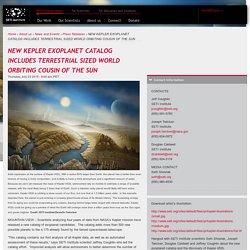
With a radius 60% larger than Earth, the planet has a better than even chance of having a rocky composition, and is likely to have a thick atmosphere and a significant amount of water. Because we can’t yet measure the mass of Kepler 452b, astronomers rely on models to estimate a range of possible masses, with the most likely being 5 times that of Earth. Planetary science. Planetary science (rarely planetology) is the scientific study of planets (including Earth), moons, and planetary systems, in particular those of the Solar System and the processes that form them.
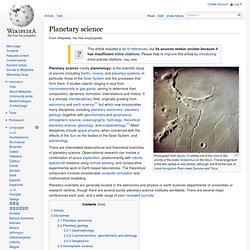
It studies objects ranging in size from micrometeoroids to gas giants, aiming to determine their composition, dynamics, formation, interrelations and history. It is a strongly interdisciplinary field, originally growing from astronomy and earth science,[1] but which now incorporates many disciplines, including planetary astronomy, planetary geology (together with geochemistry and geophysics), atmospheric science, oceanography, hydrology, theoretical planetary science, glaciology, and exoplanetology.[1] Allied disciplines include space physics, when concerned with the effects of the Sun on the bodies of the Solar System, and astrobiology.
There are interrelated observational and theoretical branches of planetary science. History[edit] Disciplines[edit] Astrophysicists find five-planet system with most Earth-like exoplanet yet. (Phys.org) —NASA's Kepler mission has discovered two new planetary systems that include three super-Earth-size planets in the "habitable zone," the range of distance from a star where the surface temperature of an orbiting planet might be suitable for liquid water.
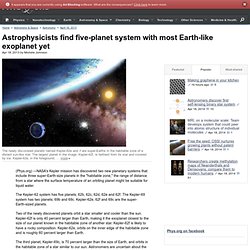
The Kepler-62 system has five planets; 62b, 62c, 62d, 62e and 62f. The Kepler-69 system has two planets; 69b and 69c. 10 Exoplanets That Could Host Alien Life. Credit: PHL @ UPR Arecibo, ESA/Hubble, NASAAs of April 2014, the Habitable Exoplanets Catalog lists 21 planets that have the best chance for life beyond our solar system.
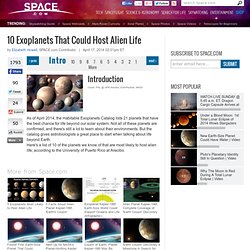
Not all of these planets are confirmed, and there's still a lot to learn about their environments. But the catalog gives astrobiologists a great place to start when talking about life beyond Earth. Nearby Alien Planet May Be Capable of Supporting Life. A newfound alien world might be able to support life — and it's just a stone's throw from Earth in the cosmic scheme of things.

An international team of astronomers has discovered an exoplanet in the star Gliese 832's "habitable zone" — the just-right range of distances that could allow liquid water to exist on a world's surface. The planet, known as Gliese 832c, lies just 16 light-years from Earth. (For perspective, the Milky Way galaxy is about 100,000 light-years wide; the closest star to Earth, Proxima Centauri, is 4.2 light-years away.) Gliese 832c is a "super-Earth" at least five times as massive as our planet, and it zips around its host star every 36 days.
Maybe Habitable.
Exomoons. Darkest exoplanet spotted by astronomers. 12 August 2011Last updated at 11:09 By Jason Palmer Science and technology reporter, BBC News.
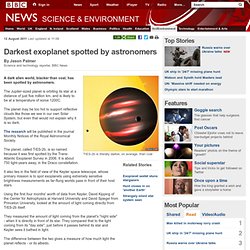
Further evidence that there are many habitable planets for humans to colonize. Astronomers confirm there are two potentially habitable planets orbiting Gilese 581. Astronomers may have just discovered the first known free-floating planet. There isn't any reason this object wouldn't or couldn't have satellites of its own; and probably does.
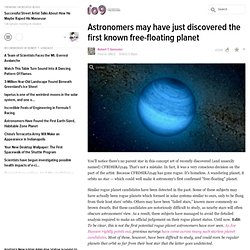
Earth has 1-6 moons at any given time, but we don't really notice them because they're small and interloping. Here, experiment: Sadly there is no way to intelligently answer those questions at this time beyond "Well, we do not know of any reason either of those things should be impossible, but we do not know anything about what would make that possible either. " We simply have no empirical evidence to work with here except for what we can observe in our own solar system, and we have absolutely no way to know whether what we observe here could be considered "typical" or whether our system represents some extreme abberration... or even whether the interactions which govern stellar/planetary formation allow for the word "typical" to have any meaning whatsoever.
Extrasolar planet. 2 January 2013: Astronomers state that the Milky Way may contain as many as 400 billion exoplanets, with almost every star hosting at least one planet.[1][2][3] An exoplanet or extrasolar planet is a planet outside the Solar System.

Rich exoplanet system discovered. 24 August 2010Last updated at 14:03 By Victoria Gill Science reporter, BBC News The researchers say the finding marks a new phase in the hunt for exoplanets Astronomers have discovered a planetary system containing at least five planets that orbit a star called HD 10180, which is much like our own Sun.
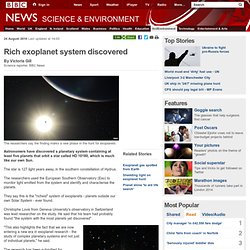
The star is 127 light years away, in the southern constellation of Hydrus. The researchers used the European Southern Observatory (Eso) to monitor light emitted from the system and identify and characterise the planets. Exoplanet HD 189733b Determined to be Color Blue Like the Earth. A planet discovered in 2005 in the constellation of Vulpecula (the Fox) was determined to be colored blue with the help of the NASA/ESA Hubble Space Telescope.
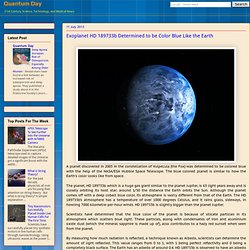
The blue colored planet is similar to how the Earth's color looks like from space. Unprecedented: Amateur astronomers discover a planet with four suns. False. At least in understanding, suns can be anywhere, Sol is the name of the star we orbit. Take your innacurate indignation elsewhere. Gliese. Planets and Exoplanets.